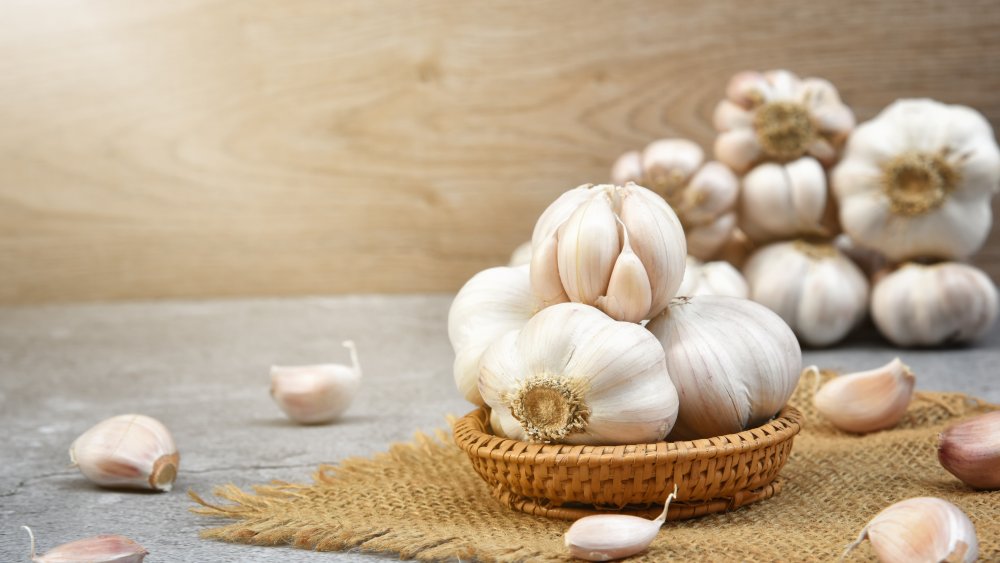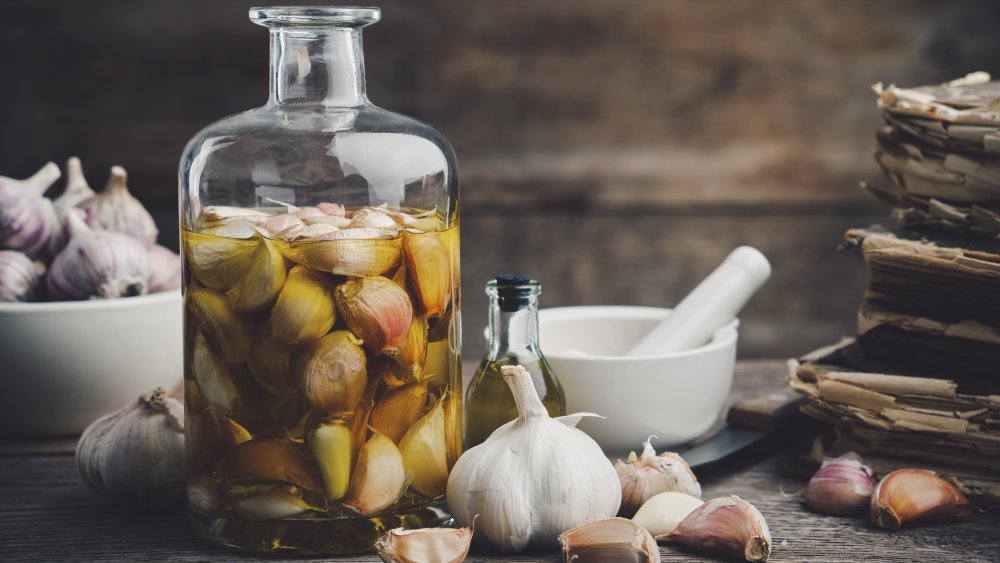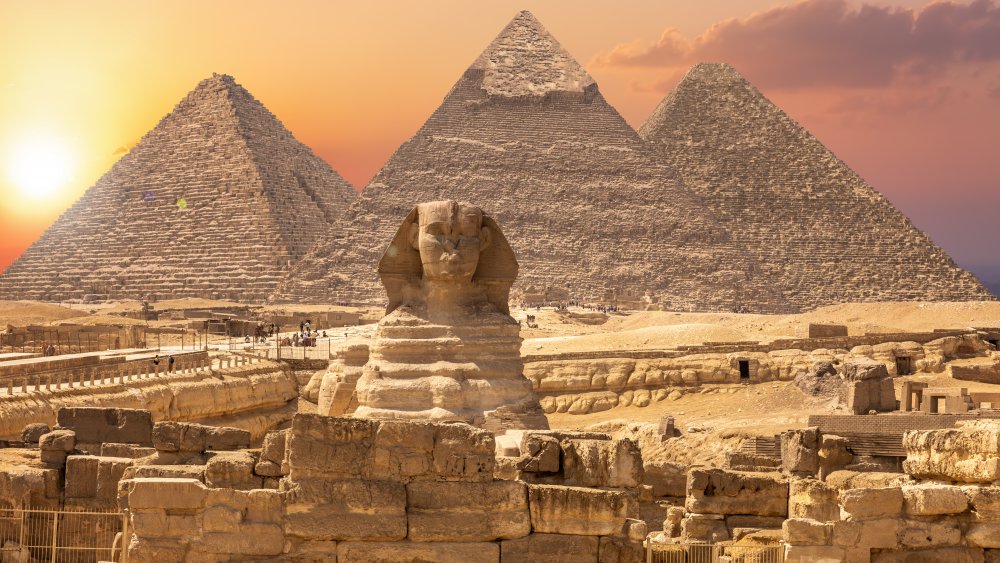The Untold Truth Of Garlic
Unless you are Her Majesty Queen Elizabeth II, you probably love garlic. Garlic is one of those go-to cooking elements that at-home cooks and chefs love to implement because of the flavors that it adds to food. For much of its history, it has been seen as something that was essential not only to cooking but within the ancient cultures that have regarded garlic as something to be revered (via Grey Duck Garlic and Simply Quinoa).
Although garlic is used as a spice, and sometimes an herb, it is actually a vegetable, according to Healthline - one with a history as rich as the flavor that it imparts. Garlic has worked as currency in some cultures, medicine in other cultures, and now as a flavoring agent for savory dishes (via Vegetable Facts). Regardless of how it was being used, garlic was seen as something that was important to the civilizations that surrounded it – from its origins in Asia to the kitchens of the United States.
Garlic possesses healing properties
Garlic is quite old. There are records of this vegetable that date back to the time of the Sumerians, around 2600–2100 BC, and the Neolithic times, around 4500 BC, according to Pharmacognosy Reviews and Vegetable Facts. Although many civilizations believed in the power of garlic, the most complete records can be found with the ancient Egyptians. In their society, garlic was seen as something that could cure any number of ailments that would plague its citizens at the time.
Garlic could be used as an antiseptic to cure wounds, prevent gangrene, give strength to those who consumed it, and even prolong life. Garlic was one of the most used remedies for the ancient Chinese, as they believed in its ability to combat depression. The ancient Indians were said to use it in tonics, as a way to cure someone's lack of appetite, cough, and skin diseases. The ancient Greeks and Israelis also regarded garlic as a way to boost physical strength and assisting the immune system.
Garlic was so important it was used as a form of payment
The Egyptian culture was said to have regarded this mighty little veggie so much that the pharaoh Tutankhamen was buried with some. According to Vegetable Facts, not only was Egypt's most well-known pharaoh buried with garlic inside of clay pots, but several of those pots were shaped like garlic. Grey Duck Garlic explains that garlic was believed to be valued as a local currency for Egyptians, although archeologists don't know if the true intention was to be used as a form of payment in the afterlife.
Egyptians would use garlic as a way to pay the slaves and workers who built the pyramids. Farms.com reports that while alive, King Tut could have easily paid 15 pounds of garlic in exchange for a healthy slave. It is believed that a garlic crop shortage caused by the Nile flooding resulted in one of the two only recorded slave revolts in Egypt.


